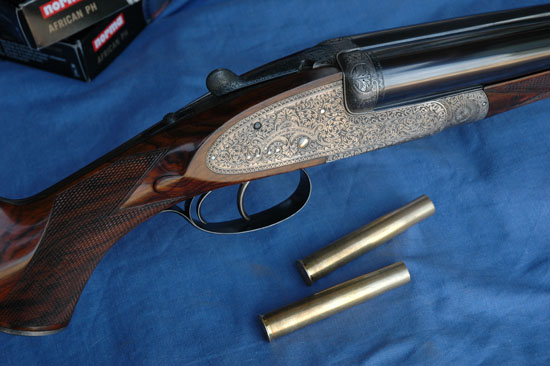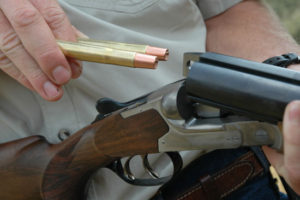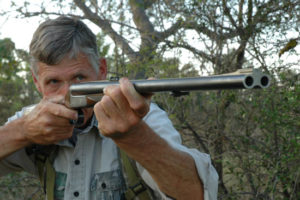

Wayne Van Zwoll examines the double-barrel boxlock and sidelock antique rifles in “The Technical Rifleman.”

About the time George Armstrong Custer made ready to round up wayward Sioux on the flanks of the Little Bighorn, a couple of gunmakers working at Westley Richards of Birmingham, England fashioned a new rifle mechanism. Like the dropping-block rifle John Moses Browning would build just a few years later (marketed by Winchester as its Model 1885), the hinged-breech action of William Anson and John Deeley was stout and reliable. It housed the sears, hammers and hammer springs of a double-barrel rifle or shotgun in a compact frame without sideplates. It would come to be called a boxlock. And it shifted the tectonic plates of British gunmaking.
Earlier doubles held the firing mechanism on plates that extended behind the hammers, the first of which were external. On a back-action sidelock, the springs lay behind the hammers; bar-action sidelocks carried the springs in front. Makers had to choose between removing wood from the grip or from the standing breech. In both cases, they introduced some weakness to that part of the firearm. The Anson & Deeley boxlock not only retained more material in this critical section, it made internal hammers practical. While sidelocks remained (and are still) popular, the boxlock was quickly adopted around the world. It was much less expensive to produce in quantity and easily adapted to cartridges of any size.

These days, sidelocks deliver a generous canvas for engravers. They also invite the hand of uncommonly gifted craftsmen; hand-detachable sidelocks are a hallmark of fine gunmaking. But best-quality boxlocks now command utmost respect, and prices rivaling those of sidelocks. A boxlock double rifle from a maker with deep British roots can cost more than a sports car.
I used one recently to hunt Australian buffalo. A Webley and Scott chambered in .500 Nitro Express, it dated to 1910. But despite a century of service in the bush, and the terrific pounding delivered by those cartridges (570-grain bullets at 2100 fps) the rifle was still tight. It opened and closed sure and silent as a hydraulic press. Quite a tribute to William Anson and John Deeley.
Double rifles have long been favored by hunters of dangerous game, for several reasons. First, they have two separate firing mechanisms. If one (or a cartridge) fails, the other is instantly available.

Secondly, there’s no feeding mechanism to jam, and doubles can be reloaded quickly. Also, the double rifle has no receiver, so overall length is a hand’s breadth shorter than that of magazine rifles with same-length barrels. The shallow profile of a double, and its low iron sights, put your sight-line tight to the barrel and nearly as snug to your forward hand. Fast, natural pointing results – assisted by low-between-the-hands balance.
The mediocre accuracy of double rifles matters not to their many fans. A double is meant for close, urgent shooting with iron sights. Minute-of angle groups are irrelevant. Alas, getting right and left barrels regulated to plant bullets to the sights can try the patience of a friar, and is as much art as science. It’s also a reason few loads exist for rimmed, big-bore “Express” cartridges. Rifles regulated for one load seldom shoot accurately if either bullet weight or speed is changed.

Next Step: Get your FREE Printable Target Pack
Enhance your shooting precision with our 62 MOA Targets, perfect for rifles and handguns. Crafted in collaboration with Storm Tactical for accuracy and versatility.
Subscribe to the Gun Digest email newsletter and get your downloadable target pack sent straight to your inbox. Stay updated with the latest firearms info in the industry.

![Best Concealed Carry Guns In 2025 [Field Tested] Wilson Combat EDC X9S 1](https://gundigest.com/wp-content/uploads/Wilson-Combat-EDC-X9S-1-324x160.jpg)


![Best 9mm Carbine: Affordable PCCs [Tested] Ruger Carbine Shooting](https://gundigest.com/wp-content/uploads/Ruger-Carbine-Shooting-100x70.jpg)
![Best AR-15: Top Options Available Today [Field Tested] Harrington and Richardson PSA XM177E2 feature](https://gundigest.com/wp-content/uploads/Harrington-and-Richardson-PSA-XM177E2-feature-100x70.jpg)
